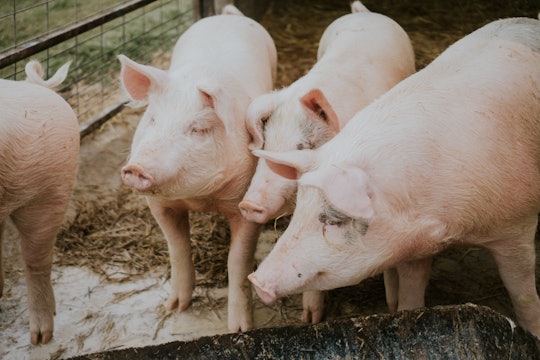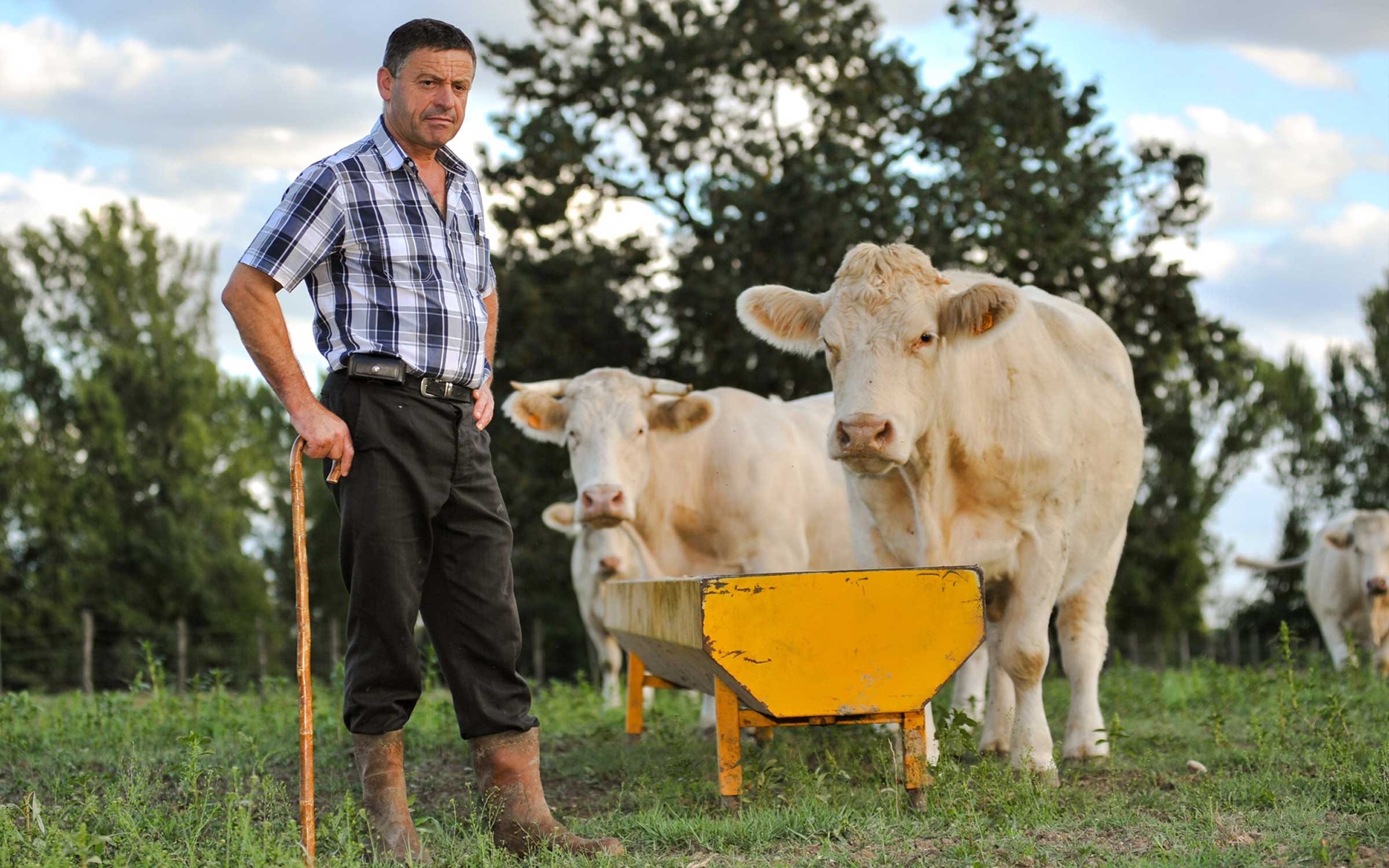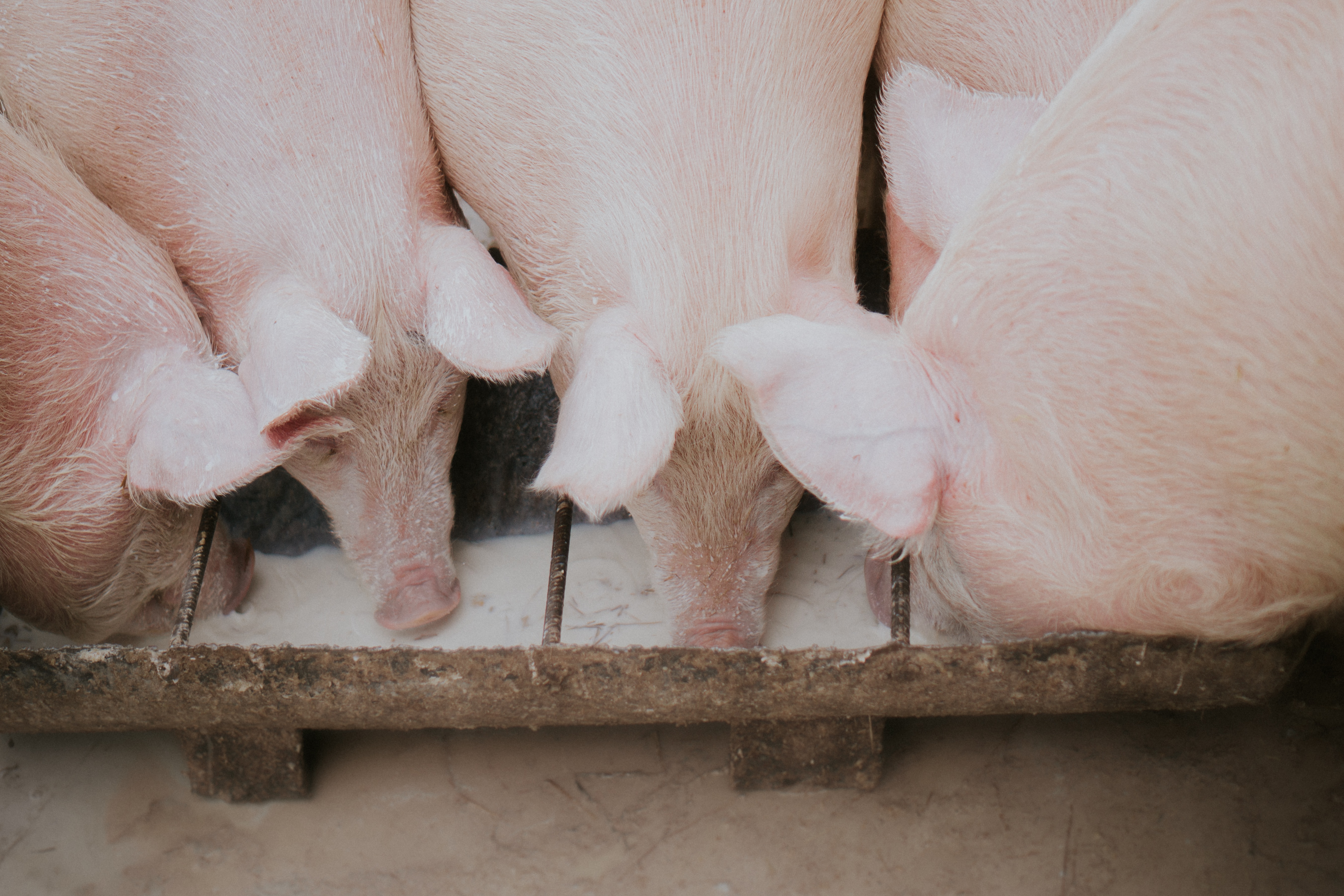
Photo by Amber Kipp on Unsplash
Probiotics, not antibiotics, might be the future of livestock farming
Probiotics are an attractive alternative to longstanding farming practice, and could help us build a better food system
Livestock farmers are always looking for ways to keep their animals healthy and help them grow bigger and faster to meet demand. One tried-and-true way of doing this is with antibiotics, which farmers have been using since the 1950's, when intensive farming was first developed. But overuse of antibiotics in livestock has contributed to the development of antibiotic-resistant bacteria, which cause very difficult-to-treat infections and endanger human lives. This past year, for example, the CDC issued a warning about antibiotic-resistant Salmonella in several brands of raw chicken.
More recently, researchers have begun looking for alternatives to antibiotics for livestock farming. They're turning to a different -biotic: probiotics. Probiotics are beneficial microbes, chiefly bacteria, that have become popular health supplements. They occur naturally in fermented foods (like yogurt, kefir, and sauerkraut) or can be purchased in pill form. Currently, most studies of probiotics focus on human health and wellness; however, the first reference to probiotics as dietary supplements to improve health (in 1974!) described them as a component of animal feed. Scientists have been interested in the application of probiotics to animal husbandry since the 1980's, and in the 1990's scientists began investigating their use in seafood production as well.

More recently, researchers have begun looking for alternatives to antibiotics for livestock farming.
Photo by Agence Producteurs Locaux Damien Kühn on Unsplash
One of the first comprehensive reviews on the use of probiotics in animal husbandry was published by a French researcher named J.R. Tournut in 1989. After reading many papers on the subject, Tournut noticed that probiotics seemed to prevent some deadly intestinal diseases. For instance, piglets and calves fed probiotics were less likely to die from diarrhea. Tournut also noted that many (but not all) trials found that piglets fed probiotics gained more weight than animals not fed probiotics.
As a result, many livestock farmers turned to probiotics to supplement their animals' diets, but they still use antibiotics in large amounts. The problem is that probiotics do not produce consistently larger or healthier animals when applied on the farm. Since probiotics vary so much in terms of the bacterial species they contain as well how they are used (for example, at what age pigs are initially given probiotics), scientists struggle to draw firm conclusions about their benefits. As such, when farmers' economic livelihoods are on the line, it is understandable that some may be wary of making radical changes to their farming practice, such as by replacing antibiotics with probiotics wholesale.

Pigs are one of the most popular food animals worldwide.
Photo by Christopher Carson on Unsplash
To address these questions, a team of scientists led by animal scientist Emili Barba-Vidal synthesized the literature surrounding probiotic use in pigs. Pigs are one of the most popular food animals worldwide. Shockingly, a 2018 report by the Natural Resources Defense Council found that American pig farmers feed about as many antibiotics to pigs in a year as are normally prescribed to humans over the same time period. In the short term, antibiotics can help keep animals healthy under conditions of intensive farming where pigs are crowded together in unnatural conditions, allowing farmers to grow as many pigs as possible at any given time. Could probiotics provide some of these same benefits without contributing to the coming antibiotic resistance crisis?
For a probiotic to be useful in pig farming, it must be able to survive in the pigs' guts, continue to work even in an intensive farming environment and with widespread use, and not endanger the long-term health of the animals or consumers. In particular, some scientists worry that probiotic bacteria could contain genes associated with antibiotic resistance, which could then be transferred to other harmful bacteria the pigs come into contact with.
Barba-Vidal and his colleagues saw a few trends in the scientific literature on probiotic use in pigs. Many of the articles they reviewed showed probiotics improving the health of pregnant sows and piglets, and making juvenile pigs grow faster and fatter. Some papers suggested that supplementing pregnant sows with probiotics increased the number of piglets born alive in a litter, as well as the number that survived to be weaned. But, some of the dozens of research papers that the researchers examined didn't show any clear benefits of probiotic application to the pigs, muddying the waters on their utility to farmers.
However, the lack of clear benefits does not necessarily mean that the probiotics themselves don't work. Barba-Vidal and his colleagues found that farmers were applying probiotics throughout the animals' life cycles, which may be a key reason why probiotic application had shown such mixed results for farmers. There is also currently no reliable protocol for determining which probiotics to give. The number and type of bacteria in a probiotic can vary enormously, and each probiotic likely impacts the animals in different ways. Probiotic use in the future will need to be tailored to address specific health concerns among the livestock. Animal nutrition expert Angel Anguilar has echoed this view, advising cattle farmers who want to use probiotics to be very aware of what kind they're using and whether they are designed to address the farmer's specific goal, whether it is improving herd health or growing larger animals.

Since every pig has a slightly different gut bacterial community, the same probiotic might have different effects on each animal.
Photo by Amber Kipp on Unsplash.
Another challenge in switching farmers from using antibiotics to probiotics is that, unlike antibiotics, probiotics interact with bacteria already in the animal's gut. Since every pig has a slightly different gut bacterial community, the same probiotic might have different effects on each animal. To better tailor probiotics, researchers may one day have to know exactly which microbes are normally found in which animals, as well as how each one contributes to health. With the development of new DNA sequencing technologies, someday farmers may be able to send a sample from each of their animals' digestive systems to scientists, who will send back an overview of the microbes already in the animals' bodies and tips for which ones to add to maximize health and growth.
Another option is that scientists might eventually be able to use genetic engineering to improve the bacteria found in the probiotics themselves. Researchers are already exploring genetically-engineered bacteria as a potential treatment for numerous illnesses. Custom-designed probiotic bacteria would eliminate the need to run trial-and-error studies to determine which probiotics work best for which livestock.
If scientists can accomplish these aims, probiotics may have a bright future in the livestock industry. The growing concern about antibiotic resistance, and the public's desire for more "natural" food items, makes antibiotics an increasingly unpopular choice. Anything that could help farmers transition away from antibiotics would be a win-win situation for humans and animals alike, and probiotics, if better understood and applied properly, may be able to do just that.



I’m somewhat skeptical about this given what I’ve read and written about for Massive Science in the past- namely, that grafting of new microbes is strongly affected by the ‘food’ that reaches the intestine. Now, the caveat here is that (as the piece mentions) previous studies dosed animals at different points in their lifespans, so successful grafting desired bacteria may have the best chance of success early in life and/or following a prophylactic dose of antibiotics to clear out occupied niches in the animal’s gut. Another way to increase likelihood of successful manipulation of the porcine microbiome would be to simultaneously change their diet, like this example of cattle feed supplemented with algae to reduce their methane emissions. Finally, and somewhat more holistically, the whole idea seems to involve continuing high-density pig farming but using probiotics instead of antibiotics to achieve high yield? Have to wonder if research that results in perpetuating this style of animal husbandry is desirable from an environmental/climate standpoint…